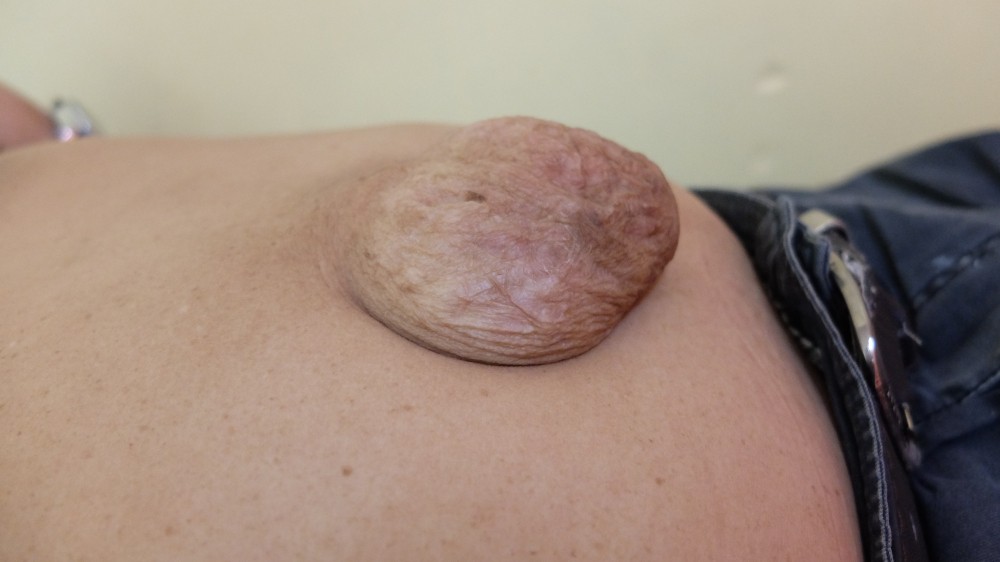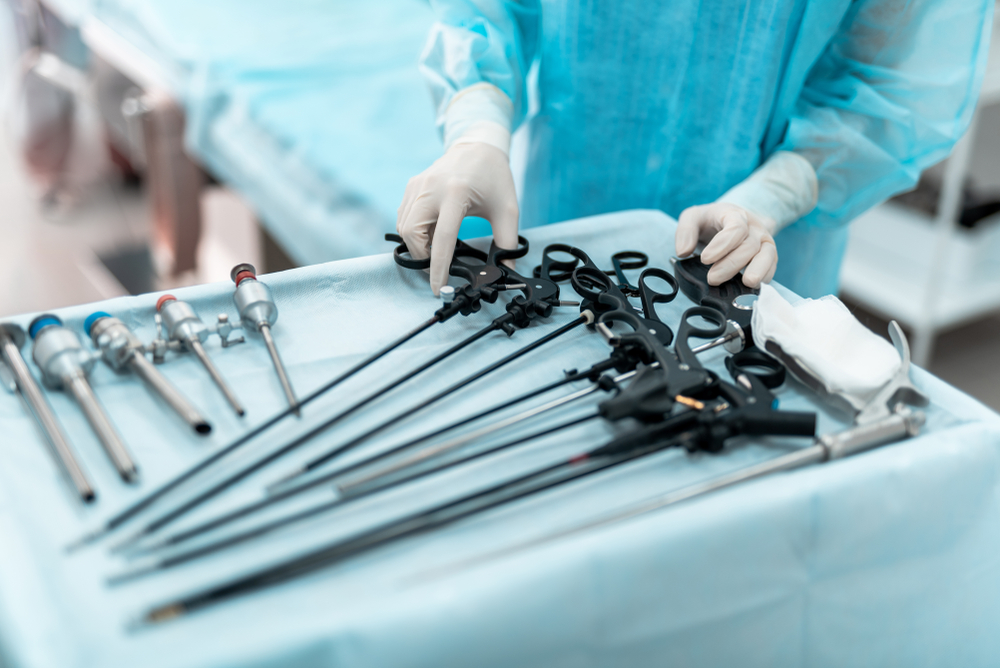Say Goodbye to Hernia Pain – Get Back to Normal Life in Just 48 Hours!
Are you suffering from a painful hernia causing bulging, discomfort, and worry? You’re not alone. Millions face this uncomfortable condition, but the good news is that laparoscopic hernia repair offers a quick, safe, and permanent solution without the fear of traditional surgery.
Our advanced laparoscopic hernia repair is a minimally invasive outpatient procedure that allows you to return to your routine within 2-3 days—no large cuts, minimal scarring, and no long hospital stays.
What Is a Hernia?
A hernia occurs when an internal organ or tissue pushes through a weak spot in the surrounding muscle or connective tissue. This creates a visible bulge or lump, often accompanied by pain and discomfort. Hernias don’t heal on their own and require surgical repair to prevent complications. If left untreated, hernias can become larger, more painful, and lead to serious complications that can severely affect your quality of life and daily activities.
Common Symptoms You Shouldn’t Ignore:
Visible bulge or lump in the affected area Pain or discomfort, especially when lifting or straining Burning or aching sensation at the bulge Heaviness or pressure in the abdomen or groin Weakness in the affected area Pain that worsens throughout the day Nausea and vomiting if hernia becomes strangulated
If you’re experiencing any of these symptoms, it’s time to take action.
What Causes Hernias?
Hernias develop due to a combination of muscle weakness and strain. Common causes include:
Chronic coughing or sneezing Heavy lifting and strenuous activities Straining during bowel movements or urination Pregnancy and childbirth Obesity and excess abdominal pressure Previous surgical incisions weakening the abdominal wall Chronic constipation Age-related muscle weakening
Types of Hernias We Treat
- 1. Inguinal Hernia:
The most common type occurs in the groin area when the intestine pushes through the inguinal canal. More common in men. - 2. Umbilical Hernia:
Develops near the belly button when the intestine pushes through the abdominal wall. Common in infants and adults with obesity. - 3. Femoral Hernia:
Occurs in the upper thigh near the groin, more common in women. It can be easily confused with an inguinal hernia. - 4. Incisional Hernia:
Develops at the site of a previous surgical incision where the abdominal wall has weakened.
Why Choose Laparoscopic Hernia Repair Over Open Surgery?
| Open Surgery | Laparoscopic Hernia Repair |
|---|---|
| Large 4-6 inch incision | 3 small incisions (0.5-1 cm) |
| Significant pain | Minimal pain |
| 4-6 weeks recovery | 2-3 days recovery |
| Hospital stay 2-3 days | Same-day or 1-day discharge |
| Large visible scar | Minimal scarring |
| Higher recurrence rate | Lower recurrence rate |
| Extended time off work | Quick return to activities |
Laparoscopic hernia repair is the modern, safer, and smarter choice for permanent relief.
How Does Laparoscopic Hernia Repair Work?
Our advanced minimally invasive procedure is simple, safe, and highly effective:
Step-by-Step Process:
- Anesthesia: General anesthesia is administered for your comfort
- Small Incisions: 3 tiny incisions are made in the abdomen
- Camera Insertion: A laparoscope with camera is inserted to visualize the hernia
- Hernia Reduction: The protruding tissue or organ is pushed back into place
- Mesh Placement: A surgical mesh is placed to reinforce the weakened area
- Closure: Incisions are closed with dissolvable stitches or surgical glue
Duration: 45–90 minutes
Hospital Stay: Same-day or overnight
Pain Level: Minimal to none
Benefits of Laparoscopic Hernia Repair
- Minimally Invasive: Small incisions result in less pain and faster healing.
- Quick Recovery: Most patients return to normal activities within 2-3 days.
- Same-Day Discharge: Many patients go home the same day after a few hours of observation.
- Minimal Scarring: Tiny incisions leave barely visible scars.
- Less Pain: Significantly less post-operative pain compared to open surgery.
- Lower Recurrence Rate: Mesh reinforcement reduces risk of hernia returning.
- Faster Return to Work: Resume work and daily activities within a week.
- Bilateral Repair Possible: Both sides can be repaired simultaneously if needed.
Post-Surgery Recovery & Care
Most patients experience a smooth and quick recovery. Here’s what to expect:
- First 24-48 Hours:
Mild discomfort at incision sites (manageable with medication) Light diet initially, then normal diet as tolerated Light walking encouraged - Week 1:
Gradual return to routine activities Avoid heavy lifting and strenuous exercise Normal diet can be resumed - Week 2-4:
Complete healing of incisions Gradual increase in physical activity Return to normal exercise with doctor’s approval - Recovery Tips:
Avoid heavy lifting (over 10 pounds) for 4-6 weeks Use proper lifting techniques when necessary Wear supportive garments if recommended Take prescribed pain medications as needed Watch for signs of infection or recurrence
Why Choose Us for Laparoscopic Hernia Repair?
- Expert Laparoscopic Surgeon: Our surgeon has performed thousands of successful hernia repairs with excellent outcomes.
- Advanced Technology: State-of-the-art laparoscopic equipment and high-quality surgical mesh.
- Safe & Hygienic Environment: Modern operating theater with international hygiene and safety standards.
- Patient-Centered Care: We understand your concerns and provide compassionate, personalized treatment.
- Complete Support: From consultation to post-operative care, we’re with you every step of the way.
- Fast & Convenient: Quick procedure with same-day discharge—minimal disruption to your life.
- Proven Results: High success rate with low recurrence rates and satisfied patients returning to pain-free living.
Frequently Asked Questions (FAQs)
- Is laparoscopic hernia repair really painless?
Yes! The procedure is performed under anesthesia, and most patients report minimal pain that is easily managed with medication. - How long does the surgery take?
The actual surgery takes approximately 45-90 minutes depending on the type and complexity of the hernia. - Will I need to stay in the hospital?
Most patients are discharged the same day or after an overnight stay for observation. - When can I return to work?
Most patients return to desk jobs within 5-7 days and physical labor within 4-6 weeks. - Can a hernia come back after surgery?
Recurrence is rare with laparoscopic mesh repair, occurring in less than 5% of cases. - What type of mesh is used?
We use high-quality, biocompatible surgical mesh that is safe and approved for long-term use. - What is the cost of laparoscopic hernia repair?
Cost varies based on the type and size of the hernia. Contact us for a personalized consultation and transparent pricing. - Can I exercise after hernia surgery?
Light walking immediately, but avoid strenuous exercise and heavy lifting for 4-6 weeks. - Is the surgery covered by insurance?
Most insurance plans cover hernia repair surgery. Please check with your provider or contact us for assistance. - What should I do if I notice a bulge returning?
If you notice any new bulging, pain, or symptoms, contact us immediately for evaluation.
Don’t Let Hernia Control Your Life – Take Action Today!
Living with a hernia is not normal, and you don’t have to suffer in silence. Thousands have already experienced life-changing relief through our advanced laparoscopic hernia repair.
Take the First Step Towards a Pain-Free Life!
Your comfort and health are our priority. Schedule your consultation today and experience the difference modern surgical technology can make.


